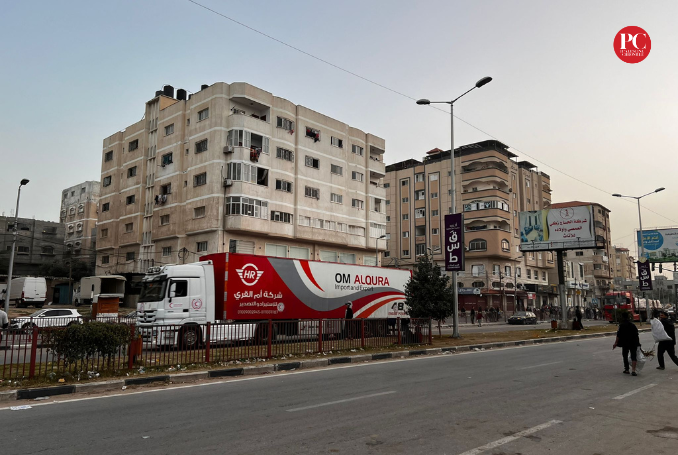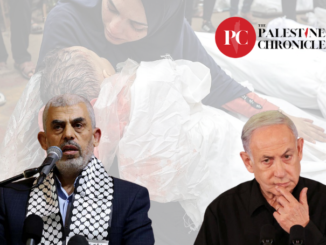
Here are a few important dates regarding the aid that was, or was not allowed, to enter Gaza starting on October 7.
Prior to the Israeli war on Gaza, starting on October 7, the meager aid that arrived to the Strip was estimated at nearly 500 trucks per day.
That aid was meant to satisfy the needs of 2.3 million Palestinians, most of them living in dire poverty.
Now imagine that even that meager aid, which hardly allowed Gazans to subsist, was completely cut off on October 7.
AL-JAZEERA: 11 Palestinians were killed in Rafah. This brings the death toll in the Gaza Strip to 65 since the end of the humanitarian truce and the resumption of the Israeli aggression against Gaza on Friday morning.
FOLLOW OUR LIVE BLOG:https://t.co/mrvMbv5uVU pic.twitter.com/WCSCemDhdA
— The Palestine Chronicle (@PalestineChron) December 1, 2023
This is why the impoverished Strip’s population almost immediately fell from the category of total dependency on aid to that of near starvation, and eventually outright starvation.
Here are a few important dates regarding the aid that was, or was not allowed, to enter Gaza starting on October 7:
October 7
Gaza is placed under total isolation.
October 9
Israeli Minister of Defense Yoav Gallant decides to cut Gaza off electricity, water, and fuel, in addition to shutting down all crossings that connect Gaza to the outside world. This included the Karem Abu Salem crossing, the main source of food and supplies to the besieged Strip.
October 10
Egyptian Authority declares the shutting down of the Rafah Crossing, following repeated Israeli bombardment of the gates, walls, and surrounding areas of the crossing on the Palestinian side.
October 20
For the first time since the start of the war, Israel allows for the access of 20 trucks, carrying aid to Gaza. This happened as a result of international outrage and was considered to be 3 percent of the average daily requirement of food and supplies that entered Gaza prior to the war.
ISRAELI CHANNEL 12 (CITING MILITARY SOURCE): The war will continue in the coming days and there is no intention of stopping it.
FOLLOW OUR LIVE BLOG:https://t.co/mrvMbv5uVU pic.twitter.com/azpT6JBB42
— The Palestine Chronicle (@PalestineChron) December 1, 2023
October 24
Total of aid trucks that entered Gaza since the start of the war did not exceed 62 trucks – compared to the 500 daily trucks that entered prior to the war.
October 29
United Nations reports say that 33 aid trucks were allowed to enter Gaza. That was described as a drop in a bucket of the required aid.
November 5
UN estimates conclude that 451 trucks have entered Gaza since October 21, which remained nearly 50 trucks below the daily average prior to the war. It is worth mentioning that much of that aid seemed to focus on medical supplies, which only reached parts of southern Gaza, and included thousands of coffins.
November 6
Egyptian authorities allow, for the first time, internationals, Palestinians of dual citizenship, and a small number of Palestinian wounded – 84 – to leave Gaza.
GAZA HEALTH MINISTRY: The number of victims of Israeli aggression since the end of the truce ended on Friday morning has risen to 109.
FOLLOW OUR LIVE BLOG:https://t.co/mrvMbv5uVU
🎥 "Forgive me, my son" A mother bids farewell to her son, killed by an Israeli airstrike. pic.twitter.com/mDYY3x6QnM
— The Palestine Chronicle (@PalestineChron) December 1, 2023
November 7
UN officials say no fuel is yet allowed to Gaza and only 4 percent of the required water is allowed into the Strip.
November 7
Egyptian authorities allow 600 internationals and Palestinians of dual citizenship, along with 17 wounded, to leave Gaza.
November 9
65 additional aid trucks are allowed to enter Gaza.
November 12
UN officials say a total of 981 trucks have entered Gaza since the start of the war.
GAZA HEALTH MINISTRY SPOKESMAN: Israel bombed residential homes and schools housing displaced people in several areas of #Gaza.
FOLLOW OUR LIVE BLOG:https://t.co/mrvMbv5uVU pic.twitter.com/W3AbIww19x
— The Palestine Chronicle (@PalestineChron) December 1, 2023
November 15
Israel allows for the entry of 23,000 liters of fuel to enter through the Rafah Crossing. It is the first relatively large shipment of fuel to be allowed into Gaza. In that context, UNRWA said that in order for the UN to provide basic services in the Strip, 160,000 liters of fuel are required on a daily basis.
November 2-17
A total of 6,500 internationals and Palestinians of dual citizenship were allowed to leave Gaza, and no Palestinians were allowed to return.
November 19
Israel allows the entry of 69,000 liters of fuel to enter Gaza from Egypt.
US SECRETARY OF STATE BLINKEN: Israel will inform the Palestinians of “safe places” in Gaza.
FOLLOW OUR LIVE BLOG:https://t.co/mrvMbv5uVU
🎥 Palestinian child tries to calm down his baby brother after they were injured in an Israeli airstrike. pic.twitter.com/X4C3fuMz3c
— The Palestine Chronicle (@PalestineChron) December 1, 2023
November 20
40 trucks of medical aid, along with 180 doctors and nurses, are allowed to enter Gaza through Rafah, for the purpose of establishing a field hospital.
November 24
On the first day of the truce between Palestinian Resistance and Israel, 200 aid trucks were allowed to enter Gaza through Rafah. Also some wounded Palestinians were allowed to leave.
November 25
On the second day of the truce, another 200 aid trucks are allowed to enter Gaza, in addition to 129,000 liters of fuel.
Over 100 Palestinians were killed and many others were injured by Israeli airstrikes targeting various areas across the besieged Gaza Strip.https://t.co/EKFogY5AE9 pic.twitter.com/V2ow1qR5hY
— The Palestine Chronicle (@PalestineChron) December 1, 2023
November 26
Palestinian Red Crescent Society says that 50 aid trucks were allowed to reach Gaza City and northern Gaza, while the rest of the aid was only allowed to reach areas in the south.
November 28
Following the two-day extension of the truce, 31 aid trucks were allowed to reach Gaza City and the northern area. No specific number of how many trucks were allowed to enter Gaza on that day.
WSJ (QUOTING US OFFICIALS): International pressure and the number of casualties may force Israel to stop its war on Gaza early next year.
FOLLOW OUR LIVE BLOG:https://t.co/mrvMbv5uVU pic.twitter.com/b2eAdogiRu
— The Palestine Chronicle (@PalestineChron) December 1, 2023
December 1
With the collapse of the truce, Israel began targeting Palestinian homes, UN schools and other civilian infrastructures. No aid was allowed to Gaza.
(Sources: Al-Jazeera, United Nations, Palestinian Red Crescent Society)








